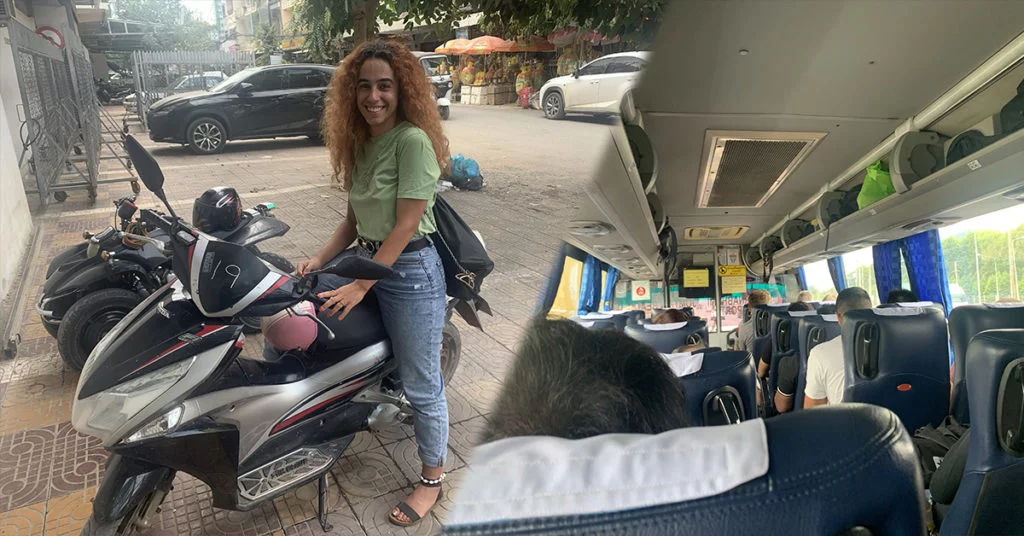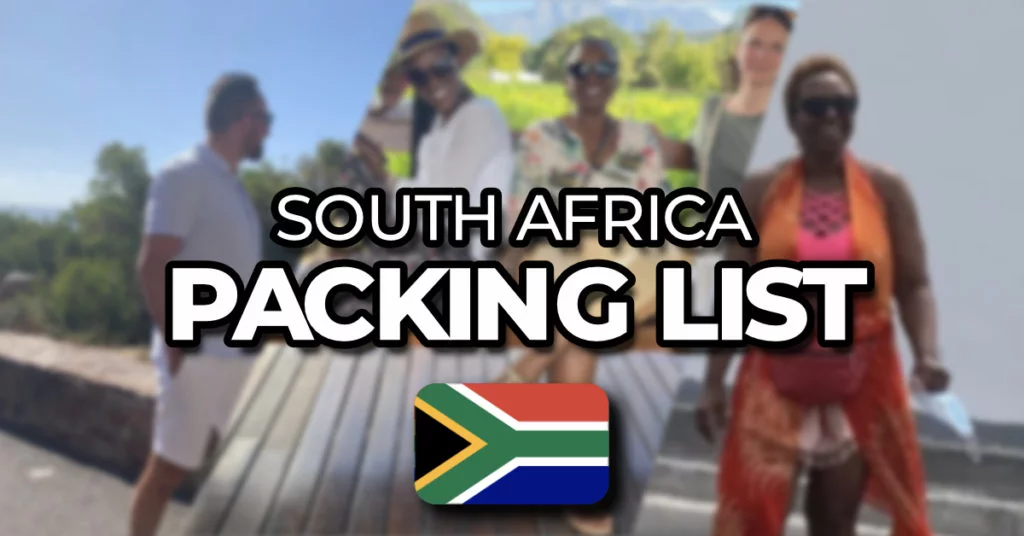You may have heard of Cape Point and assumed that it’s where the two oceans, the Atlantic and the Indian Ocean, meet but this is incorrect. Cape Agulhas is the actual true point of the two oceans meeting. The fallacy that Cape Point is the meeting place has been going on for a while, so it’s time we offered some clarity on this South African mystery. In this article, I’ll explain the facts and the myths about this curious mystery.
L’Agulhas or Cape Agulhas is the most southern tip of Africa. It’s a small coastal town about 3 hours’ drive from the city of Cape Town. It’s the only town whose coastline is made up of the Atlantic ocean to the west and the Indian Ocean to the east, which makes it the true meeting point of the two oceans.
Cape Agulhas – The True Place Where Two Oceans Meet



Most people get confused between the three; Cape Agulhas, Cape Point, and Cape of Good Hope for a good reason.
Cape Point is a promontory (raised piece of land projecting into a body of water) located at the extreme southwestern tip of Africa and it is a little to the east and north of the Cape of Good Hope. This whole area is part of Table Mountain National Park, so there’s an entry fee to access it.
The two are basically 2 kms (1.24 mi) apart and both lie south of the Cape Peninsula, on the Atlantic Ocean. However, Cape Agulhas is located much further away, about 170 km (105 mi) from the city of Cape Town, and lies at the geographic southern tip of South Africa, and the whole continent. This is what gives it its unique advantage of being surrounded by the two oceans, the Atlantic to the west and the Indian to the east. This is where the warm-water Agulhas current meets the cold-water Benguela current. It turns out that the meeting point fluctuates as the two crash into each other, so the meeting point can be anywhere between Cape Point and Cape Agulhas based on the currents.
Do not however expect to see a visual line as the two oceans meet as some people believe, this cannot be seen with the naked eye. The sea doesn’t change color where the two meet. The only obvious thing you see are the dangerous swells and tides around the point where the two meet.
Even though this area is good for fishing, it is quite dangerous and many fishermen have died here due to the strong currents that create freak waves. This area also has a history of many shipwrecks due to its treacherous waters.
False Bay and Table Bay
You may also have heard of False Bay and Table Bay. False Bay is located North-East of Cape Point and it’s where the well-known Simon’s Town naval base is located. This bay is also well-known for its great white sharks, those that hunt the Cape fur seals. Boulders’ Beach, famous for its penguin colony is situated here. This is a firm favorite with the tourists who come to see the penguins.
Table Bay, on the other hand, is a natural bay that is on the Atlantic Ocean. Said to have been founded by Jan van Riebeeck in 1652, it is located at the northern end of Cape Peninsula and stretches all the way south to the Cape of Good Hope. It was named after Table Mountain since it is dominated by it.
Shipwrecks At Cape Agulhas
This area is notorious for the number of shipwrecks that occurred here years ago, due to its rough waters. Some of the famous ones are Birkenhead, The Zoetendal, and Arniston.
The Birkenhead (1852) is known for being the first to introduce the “women and children first” protocol. Because they instituted this rule all the women and children who were on board were saved when it went under leaving the majority of the men to perish as they watched the women take all the available lifeboats that day. These shipwrecks are found scattered along the Agulhas coastline.
The remains of the Meisho Maru 38 wreck, a Japanese fishing vessel that met its end on November 16, 1982, can still be seen lying on the shores of Cape Agulhas. Fortunately, all crew members escaped death that day and left the vessel lying there till today. For those who are interested in the other shipwrecks the pieces of the vessels are currently on display at the Bredasdorp Shipwreck Museum.
Cape Agulhas Attractions & Things To Do
Cape Agulhas is around a 2.5/3-hour drive from Cape Town but the road is beautiful and takes you through a number of smaller towns on your way. It’s definitely worth the drive and there are a lot of things you can do once you’re here.
Things to do On-site Cape Agulhas
- Hiking – A number of hiking routes are available ranging from 3.5 kms (2 mi) to 10.5 kms (6.5 mi).
- Shipwrecks – Visit the Meisho Maru No. 38 shipwreck
- Lighthouse – The second-oldest working lighthouse in South Africa it takes 71 steps to get to the top.
- Museums – Explore the on-site museum housed within the lighthouse.
- Fauna – Explore the rich diverse fauna including limestone fynbos unique to this area
- Swimming – Take a swim in the lagoon.
- Fishing – Choose to do either rock or deep-sea fishing
- Biking – Join one of the many biking trails or participate in the Cape Agulhas Classic race.
Things to do Off-site Cape Agulhas
- Birdlife – The Struisbaai-Elim route has a vast wealth of bird life to explore. including endangered species.
- Wining & Dining – Visit the Black Oyster Catcher Winery or any of the restaurants and pubs in the area.
- Diving – Sign up for a diving or snorkeling class in Struisbaai.
- Whale watching – catch the whales between July and September season.
On-site
See The Southernmost Point of Africa
Usually, the first thing everyone rushes to see when they arrive is if there is a visible line where the two oceans meet, but unfortunately, there is no visible line you can see. There is, however, a cairn that marks the tip’s exact location which is 34° 49’ 58″ south and 20° 00’ 12’’ east. It is at this longitudinal point where the Atlantic and Indian oceans officially meet.


Take a Hike and Observe The Fantastic Biodiversity
This is “flora and fauna” country. Taking a hike along the fynbos is a fantastic choice – choose from a number of hiking routes – Spookdraai (L’Agulhas), Two Oceans (Agulhas rest camp), Rasperpunt (L’Agulhas) or Grootberg (Napier), and you will experience the large biodiversity of vegetation that includes the unique limestone fynbos.
There are flowers to be enjoyed all year here, though, most of them bloom between May and September. When it comes to fauna there aren’t many mammals to be seen but the Cape Grysbok can be spotted. Of course, there are whales, Cape fur seals, and dolphins in the water.
Visit the Lighthouse
Why not go up the Lighthouse – climb the 71 steps to be exact! This is the second-oldest working lighthouse in the country that was built to help the early explorers. The views once you get up there are truly spectacular! The building was constructed out of limestone that was mined in the area.
The lighthouse museum is also housed here if you prefer that. You will learn lots about the history of this place at the museum and maybe buy a few trinkets to take home to boast about being at the meeting of the two oceans.
Look for Shipwrecks
As I said earlier, this area is notorious for its rough waters due to the storms which resulted in many shipwrecks over the years. It even earned the name “The Graveyard of Ships” many years ago. It is said that over 140 shipwrecks occurred in the area. Even though most of the wrecks are scattered along the Agulhas coast the Japanese fishing vessel, the Meisho Maru No. 38 can be seen here on-site.
Many of the hiking trails begin at the shipwreck or go past it but you can also just go to it without joining a trail.
Take a Swim or Go Surfing
Take a swim in the cold water in the lagoon if that tickles your fancy. You just have to be very careful because the coastline is quite rocky. Be careful swimming in the sea because the currents are quite strong here! If you’re a strong swimmer and you like surfing, this is a great spot to surf and is renowned for great surfing conditions.
Go Mountain Biking
Those who are into mountain biking should consider joining the Cape Agulhas Classic that takes place in December, or if you can’t wait that long, just do one of the routes on site.
Off-site
Watch the Birds
There are a number of species to be seen here such as the Cape Sugarbird, Southern Doubled-Collared Sunbird, and Orange-breasted Sunbird, as well as some of the vulnerable species such as the Hottentot Buttonquail and Black Harrier. When it comes to the larger species the Denham’s Bustard, Blue Crane, and Secretarybird are some of the ones that are quite visible in the area.
Enjoy Wining & Dining
There is a quite a number of places to choose from including the Black Oyster Catcher Winery where you will be thoroughly spoiled with amazing seafood and great wines. You can also take the wine route to visit other wineries in the nearby areas.
Take a Diving Class
Visit the nearby Struisbaai which is under 4 kms (2.5 mi) to join a diving and/or snorkeling excursion, or just chill with a drink on the white sand at the beach. Alternatively, you can take surfing lessons or feed fish to the harmless stingrays. at the harbor.
Participate in Whale Watching
The whales can be seen from April to January though peak season is between July and September. From the nearby town called Arniston, you can usually spot the following whales; Bryde’s, Long-finned pilot, Minke, Pygmy right, and Pygmy sperm whales as well as the Southern right and True’s beaked whales.
What’s The Significance of Cape Point & Why Should I Visit?
Cape Point is one of the biggest tourist landmarks in Cape Town for various reasons. Together with the Cape of Good Hope, it forms part of Table Mountain National Park and is characterized by the rich flora & fauna, specifically 7750 hectares. It is also the point that most people often confuse with Cape Agulhas as I explained right at the beginning. This is mainly because it is located on the most Southwestern tip of the continent. It however lies on the Eastern side of the Cape Peninsula. When you get there the first thing you want to do is take the funicular (80 ZAR ($5) for adults & 45 ZAR ($3) for children and pensioners) which takes you up to the lighthouse on top of the cliff so you can see the jaw-dropping views.
Here are some of the reasons why you should add Cape Point to your bucket list:
- The area has a history of no less than 26 shipwrecks.
- It is surrounded by cliffs some of which are 249 m above sea level.
- It contains over 250 species of birds, as well as, baboons, bucks, and other animals. Be careful of the baboons, they can steal your belongings if you’re not paying attention.
- The place offers 17 scenic walks and trails.
- There are two historical monuments on site – Diaz and Da Gama crosses.
- There are restaurants and curio shopping on site. In fact, the main restaurant is called The Two Oceans (probably another reason people get confused)
- The place offers angling and diving activities.



Transportation Options to Places in Cape Point
The Red Bus – The Cape Point Explorer
Daily bus tours run to Cape Point from various pick-up points in the city. These include a stop on Long Street, the ticket office at the V&A Waterfront, and various stops in Green Point, Seapoint, and Camps Bay. The bus covers all the interesting sightseeing points, like the Ou Kaapse Weg, Muizenberg, Boulders Beach, and Simon’s Town and it goes to both Cape Point and Cape of Good Hope. The normal fare is 525 ZAR ($30) for adults and 275 ZAR ($15) per child (off-peak discounts are available). You should put aside the whole day to do this and you will be glad you did.
If you can afford it there are helicopter rides as well which give you the best views of both Table and False Bay. This 50-minute ride costs around 7950 ZAR ($440) per person.
The BazBus
They’re the only bus service that conducts tours, even if there’s only one passenger booked for the day, and they cover pretty much the same route and tourist attractions such as Chapman’s Peak, an optional stop at Boulder’s Beach, then Cape Point, and Cape of Good Hope. They also conduct daily tours and pick up passengers from hotels and hostels. The basic fare starts at 900 ZAR ($50) and depends on whether you want to add the optional extras such as entry tickets to Cape Point or not.
Taxi or Shuttle Service
This is one of the most common ways to travel here. There are many local and reputable shuttle/taxi companies that service these routes. You will have peace of mind because you won’t be driving, and if you want to sample the wines on some of the tours that include wine tasting you will not have to worry about driving back.
Shuttle services offer different rates depending on what’s included and the number of people, so you may have to perform an internet search to compare or just ask at your hotel/hostel’s main desk who they recommend.
Train
For those who want to save a bit of money, you could take the train from the city to Simon’s Town and rent a bike from there. I don’t recommend the train because it’s not the safest option to travel in Cape Town.
Car Hire
If you don’t mind driving in a foreign city this is the best option, especially if you are going to Cape Agulhas which is even further (170 kms / 105 mi) as the other options may be way more expensive. You can hire a car from any of these reputable companies – Budget, Avis, Europcar and First and they all offer rates that are quite competitive.
FAQs
Is Cape Town where the two oceans meet?
No, the two oceans meet at Cape Agulhas, a small town 170 kms outside of Cape Town. This area is the southernmost part of Africa.
Why is Cape Agulhas considered the true meeting point of the oceans?
It lies at the southernmost part of the entire continent of Africa and its coastline is made up of the Indian Ocean to the east and the Atlantic ocean to the west.
Are there any specific signs or markers indicating the oceanic confluence?
Yes. The tip’s exact location is marked by a cairn which marks the longitudinal point where the two oceans officially meet.
Are there guided tours available to the oceanic confluence point?
Yes there are many shuttle services that offer tours to Cape Agulhas. Some are one-day tours and others are multi-day tours that combine other smaller towns along the way to Cape Agulhas or further past to the Garden Route.
How far is Cape Agulhas from Cape Town, and how can I get there?
Cape Agulhas is roughly 170 kms (105 mi) from Cape Town and the best way to get there is by booking a shuttle service or hiring a car if you don’t mind driving yourself.
Can you swim at the point where the oceans meet?
Yes, you can swim in the lagoon if you don’t mind the cold water. However, swimming in the sea is not advised due to the extremely strong currents where the oceans meet. There have been many shipwrecks here.
Is Cape Town a good place to observe marine wildlife?
Yes, there are tours that allow you to explore the marine wildlife of the Table Bay ecosystem where you get to see dolphins, whales, seals, penguins, and sunfish in their natural surroundings. You can also take a Marine Wildlife Walk at the V&A Waterfront where you are likely to spot the Cape fur seal, otters, and sunfish.
When is the best time to visit the meeting point of the oceans in Cape Town?
If you want to catch the whales it’ll be best to go during whale season from July to September but any time that is outside of winter will be a good time to visit. The Cape Agulhas Classic race and trail run takes place in December for those who are into mountain biking.

Thola is a research psychologist who left the field in 2019 and has been writing professionally for various magazines including her own blog ZuluSingleandFab since then. She also writes as a ghostwriter for various clients and has published 5 books to date. Her love of writing started during the COVID-19 lockdowns when she created her website to share her travel stories and her health and fitness journey. A gym enthusiast and lover of healthy food, she published a book, “Fit and Fabolous at Fifty” on Amazon Kindle in 2020 and is currently in the process of writing her second book about her life experiences from leaving a powerful corporate job to working as a freelance writer.


